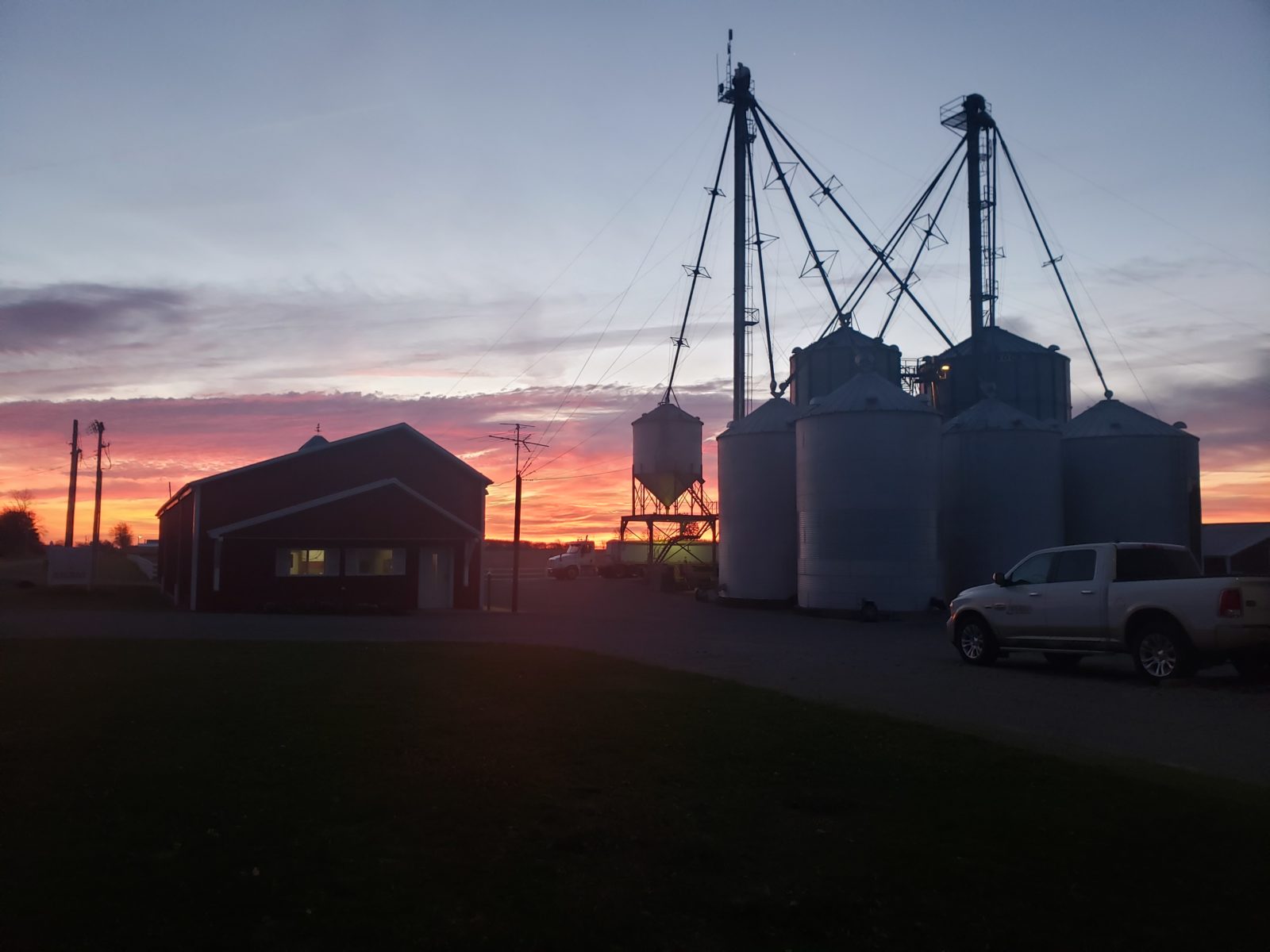 After a couple weeks of beautiful weather for harvest the first part of October, we had a couple weeks of poor weather that kept us out of the fields and kept the soybeans too damp to cut. But beautiful weather – including unseasonably warm temperatures we call “Indian summer” – the first week of November allowed us to get back into fields to start harvesting corn and finish cutting soybeans.
After a couple weeks of beautiful weather for harvest the first part of October, we had a couple weeks of poor weather that kept us out of the fields and kept the soybeans too damp to cut. But beautiful weather – including unseasonably warm temperatures we call “Indian summer” – the first week of November allowed us to get back into fields to start harvesting corn and finish cutting soybeans.
Our late planting last spring and early summer impacted harvest timing. In some of the soybean fields we were harvesting last month, we had spots where the soybeans were too green, or immature, to cut well. We left those, and finally returned to harvest them at the beginning of November.
If soybean stems themselves are green, meaning they haven’t fully died and dried up internally, or if the stems and leaves are wet because of dew, rain or moisture in the air, the plants don’t go through a combine well. They will plug the machine and make it harder to effectively shake the pods and soybeans from the rest of the plant.
 We spent some of our down time ensuring that the upgrades to our grain handling system made this year work correctly. We updated our corn drying system and dump pit, which allows us to empty semis of grain and carry that grain into our storage bins.
We spent some of our down time ensuring that the upgrades to our grain handling system made this year work correctly. We updated our corn drying system and dump pit, which allows us to empty semis of grain and carry that grain into our storage bins.
By the time we returned to the field with the good weather, all our soybeans were fully ripe and ready to cut. We are finishing soybean harvest the first week of November. The last field we cut was the 12 hectares, or 30 acres, of tofu seed beans that we planted last June for KG Agri Products, Inc. These soybeans are the ones that were grown in Argentina last winter, and our crop will become seed for other U.S. farmers to raise next season. We are harvesting these last so that we can clear our combine and other machinery out really, really well. We want to keep those soybeans from being mixed with any others.
 The tofu seed beans have looked good all season. We expect a good seed crop from the field. Yields will be lower because the beans were planted so late, but the quality should be good. I’m “tickled pink,” or extremely happy, with an average yield from this field.
The tofu seed beans have looked good all season. We expect a good seed crop from the field. Yields will be lower because the beans were planted so late, but the quality should be good. I’m “tickled pink,” or extremely happy, with an average yield from this field.
The improved weather also allowed us to start harvesting corn the evening of Nov. 1. We started with the field that is furthest from us, about 56 km, or 35 miles, from our main farm. Because our fields are spread out over a distance, it takes quite a bit of time to move equipment from field to field. We harvested both corn and the remaining soybeans that were farthest from us, and then moved to fields closer to our main farm.
So far, corn yields have been disappointing. The first field was harvested at 22% moisture. And the moisture content is much higher in the fields closer to home. We hope that the warm weather will dry the crop as much as possible, but by the end of the second week of November, we will steadily be harvesting corn, regardless of the moisture. Our hope is to be done by late November – Thanksgiving to be exact, the U.S. holiday that is on Nov. 26 this year.
 The poor weather also slowed other fall plans. We are still waiting for our chicken litter, potash and cover crop seed to be spread in harvested fields. The custom applicator who has the equipment to spread the litter is behind because of the weather. Chicken litter is a dry, fine consistency that enriches our soils, and technology now allows it to be spread according to the nutrients needed in specific areas of the field. We hope to see the equipment in our fields any day.
The poor weather also slowed other fall plans. We are still waiting for our chicken litter, potash and cover crop seed to be spread in harvested fields. The custom applicator who has the equipment to spread the litter is behind because of the weather. Chicken litter is a dry, fine consistency that enriches our soils, and technology now allows it to be spread according to the nutrients needed in specific areas of the field. We hope to see the equipment in our fields any day.
And it looks like I will run out of time to create new waterways in fields where gullies have been forming. By the time we finish harvest, it will likely be too cold to get grass established to create those waterways before winter. That’s a project that will get pushed into next year.
But that’s how farming works. We make plans, but then we adjust how we carry them out based on the weather and timing. And work long days at this time of year.

